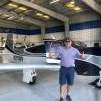Signature is evil
-
Members Online
- M20Kid
- Barzook
- Bpvlbv
- M20F
- Lax291
- Griswold
- Pinecone
- kortopates
- Ed de C.
- redbaron1982
- MikeOH
- Jake@BevanAviation
- Buckeyechuck
- bigmo
- Glen S.
- KLRDMD
- mmcdaniel33
- Hank
- RangerM20
- JLC Avionics
- M20S Driver
- TCC
- eman1200
- Shrobby
- 1980Mooney
- Doug G
- spitzfyre
- hammdo
- Nico1
- OR75
- jetdriven
- TxAviator
- Bondo
- EricJ
- ohdub
- Sense
- Marc_B
- AspiringOwner
- A64Pilot
- Stanton R
- Aaviationist
- gabez
- Hector


Recommended Posts
Join the conversation
You can post now and register later. If you have an account, sign in now to post with your account.